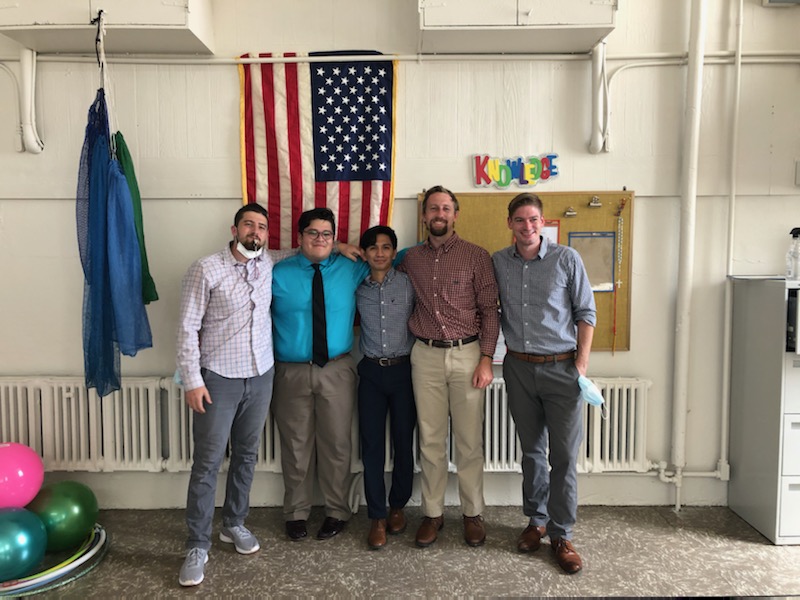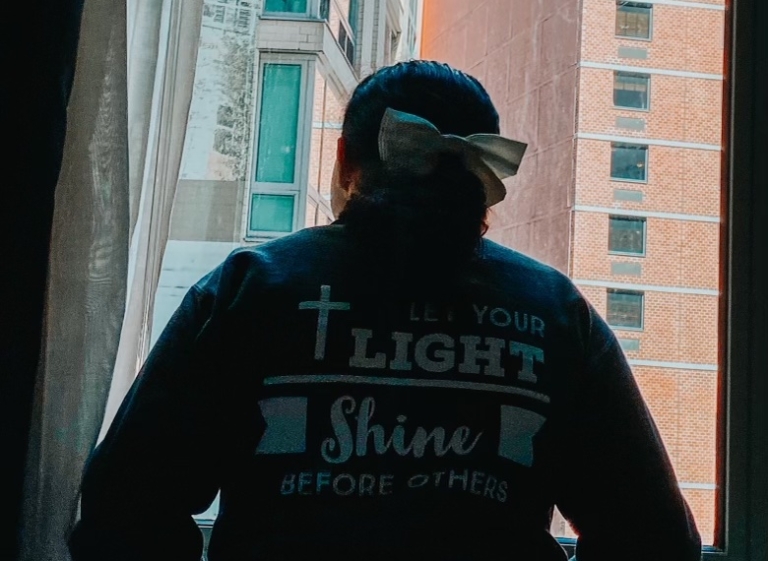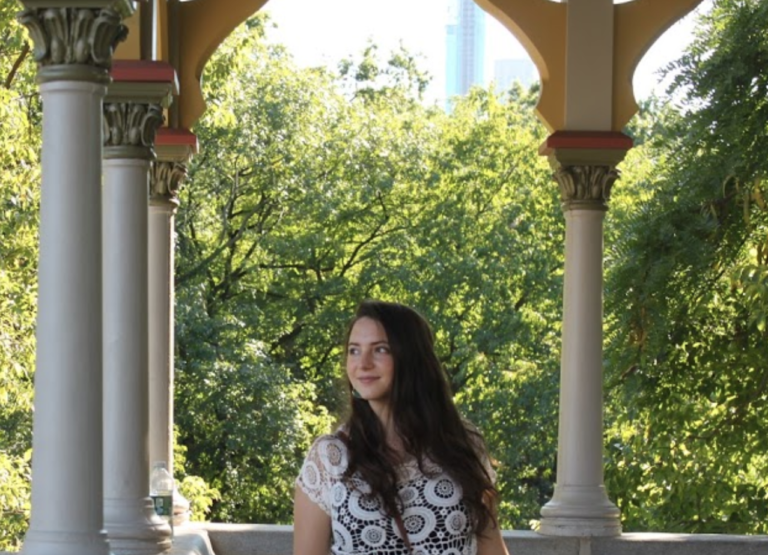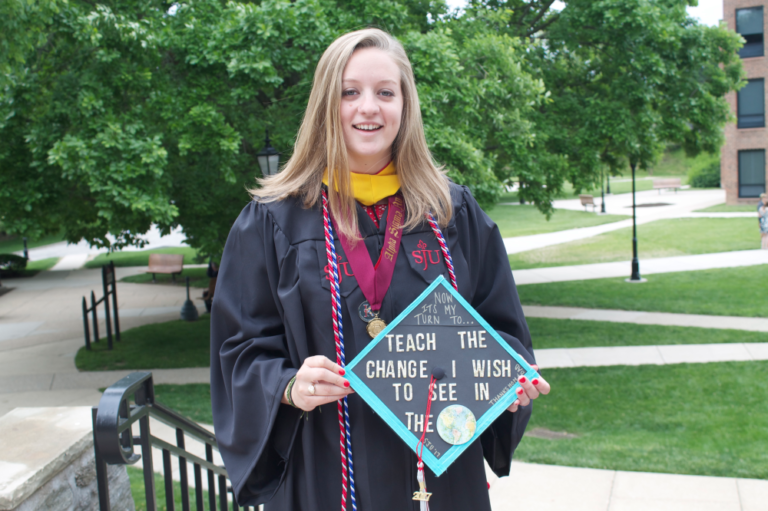First off, we’d love to hear your short bio. Where you grew up, where you went to school, and a short “why Seton.”
So I’m a “Cradle Catholic.” I was raised Catholic, grew up in Catholic Parochial schools, and went to Catholic High School. Learning about and growing in my faith, though, wasn’t a vibrant aspect of my life growing up and at best, it was compartmentalized to Theology class.
I went to college at the University of St. Thomas, in St. Paul Minnesota. St. Thomas is a pretty typical Catholic University, but, in my opinion, the thing that differentiates it is the Catholic Studies Program, which is a department on campus that explores not only Catholic Theology but also Catholic culture. The impact of the authentically-rooted cultural opportunities (dinners, masses, lectures) that were built by that program really spilled out of the program and into the wider university. Through my involvement, I declared a Catholic Studies minor and had the opportunity to study abroad in Rome. At some point during my sophomore year, I began to delve deeper into my faith, and find the answers to questions that up until this point I didn’t have the answers to: questions of faith vs. science, and questions of why Catholicism. I ended up changing my Marketing major to pursue a double major in Philosophy and Catholic Studies. I really fell in love with the more intellectual and academic aspects of the faith. I fell in love with Church History, and with authors like GK Chesterton, Evelyn Waugh, and Tolkien. I had true encounters with the Sacraments, and began to really live out the faith.
I think this is a common experience with many STFs, that they fall in love with the intellectual aspect of the faith, but, at a certain point, it alone is not enough to bring them a truly Christian life. For Fellows who have paths similar to mine, they need their abstract love of the faith to take concrete form in the world. They want their love for Truth to exist not just in their minds and hearts, but in service.
After college I applied to a program called PACE, which is a program through the University of Portland that allows post-graduates to pursue a graduate degree in education while teaching in an underserved Catholic school. At this time, I was searching. I knew I loved the intellectual aspect of the faith, but I was searching for something outside of myself.
Through PACE, I was sent to Ogden, Utah to teach at one of only three Catholic schools in the entire state. I envisioned myself teaching Language Arts, and being a kind of “Dead Poets Society” influence. I didn’t want to teach Theology specifically, but I envisioned myself integrating the faith within culturally relevant topics for my high schoolers. However, because Utah has a very small Catholic population, and the school that I worked for had very few Catholics on the staff, once the principal found out that I had this love for theological pursuits, he made me the religion teacher.
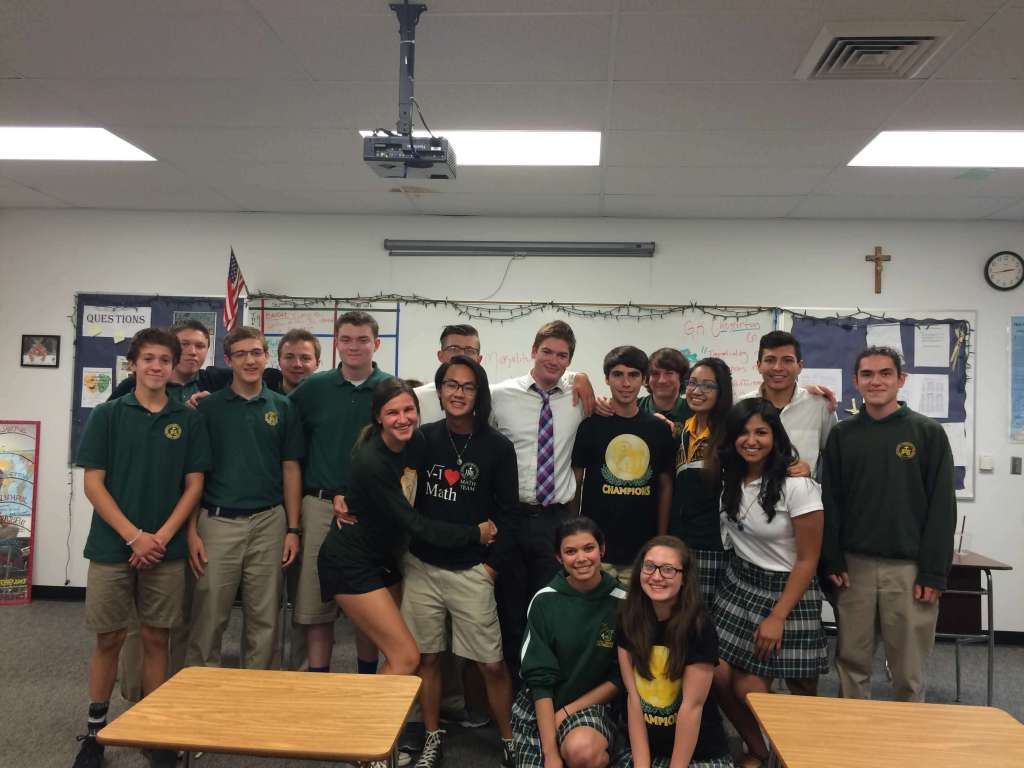
I fell in love with teaching theology. In fact, I remember going home for Christmas break and knowing that teaching theology is what I wanted to do for the rest of my life. It was that fast. Teaching was tough, and that first year was the hardest year of my life, but I didn’t want to do anything else. I could feel myself becoming a better teacher every day.
I graduated from the program, met my wife, we fell in love, she got a job at Seton, and I started teaching at a very affluent school in Long Island, New York. After teaching there, I really felt a call to go back into an underserved setting. That’s when I started working at Seton.
I think that the Church is being called to re-approach culture and society. That means that in every facet of society we need creative and innovative people who are going to put the souls of the people we encounter first and stay truly and authentically tied to the mission of the Church. We need to do that within education, within politics, within art, culture, architecture, and (goodness gracious) within healthcare. We need to be very creative and shrewd with our resources and in how we choose to approach this emerging generation. Seton is doing that within education.
My work at Seton serves these two loves that I have: one being spreading the message of the Church and the second being my desire to have a servant’s heart. That means finding ways to roll up my sleeves and really use my talents and gifts on the ground to serve the mission of the Church.
Seton Teaching Fellows serve the mission of both Romero Academy at Resurrection, as well as the Brilla/ El Camino partnership in the Bronx, but the schools are very different. Romero Academy is a Catholic school, and Brilla is a Public Charter School with an optional, Catholic extended-day program. At our Brilla schools in New York, you were an El Camino leader and manager, and now you’re the Assistant Principal of Romero Academy at Resurrection. From your experience with both Romero and Brilla so far, what is the comparison? How do you think that Romero will be similar to the Brilla/El Camino partnership, and how do you think it will be different?
Brilla and El Camino is an organism with proportional resources available to it. Because of that, the Brilla & El Camino partnership has a lot of opportunity to be very intentional in how they brand, model, and move. Romero is just starting, so right now, it is bare bones. Our structure, our budget, and our operating staff is very lean. Romero is true Catholic ed, all-hands-on-deck, serving the community. At Romero we have the opportunity to really explore and leverage the principle of subsidiarity in a powerful way. We’re asking, “How do we on the ground encounter this community, how do we utilize our limited Catholic school resources (because we do have limited resources) in an effective and innovative way for our students and families and teachers?”
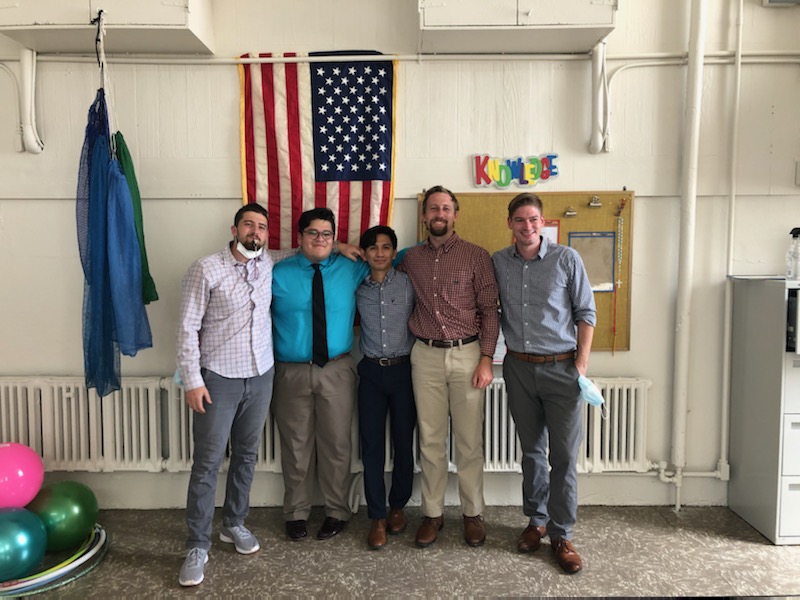
One of the ways we’re answering this question is through our El Camino curriculum. The Fellows teach catechesis using our in-house curriculum in both geographies, however, it’s important to note that the beauty of Romero in Cincinnati is that it’s a Catholic school. A Catholic vision can be created in every minute of a student’s school day. In New York, Brilla has done a wonderful job making sure that the work of El Camino is buttressed in a secular way through robust character formation. But we cannot deny that there are limitations to that. It’s El Camino that really brings the faith to life.
Here at Romero, it’s going to be a great challenge and a luxury to bring the faith to life throughout the entire day. This is a challenge that a lot of Catholic schools fail at. In many of the Catholic schools that I’ve taught in, theology is relegated to the theology block and to mass. What we want to do within Romero is liberate theology from the theology classroom. We want the faith to cross-pollinate every area of the school, every minute, every aspect of the day. It’s become clear to me that it is a duty we have as a Catholic school. We need to build systems around this duty, and we need to measure our results.
How do you think your experience as an El Camino leader/manager prepared you for your new role as an assistant principal?
As a manager of Seton Teaching Fellows for the past three years, I’ve realized that the jump from classroom teacher to a manager of teachers is not as simple as you’d think. In fact, it’s a completely different set of tools. As a manager of STFs, I’ve learned the importance of walking with a person. Education itself is a vocation, and the life of a Fellow is entirely vocational. Every minute of a Fellow’s day is poured into their work. It’s not a 9-5 job. As a manager, I learned that very quickly. I can’t just serve certain aspects of the life of a Fellow, but I must be aware of and walk with every single aspect, whether it’s communal, spiritual, or academic growth that’s needed. As a manager, I had to learn to tear down those walls that I had compartmentalized in my mind. It’s important for us to realize we don’t serve a Fellow just so that they can serve the lives of the students, we need to serve a Fellow as a person, and the byproduct of that is that they will be able to be in a better position to care for and nourish our students.
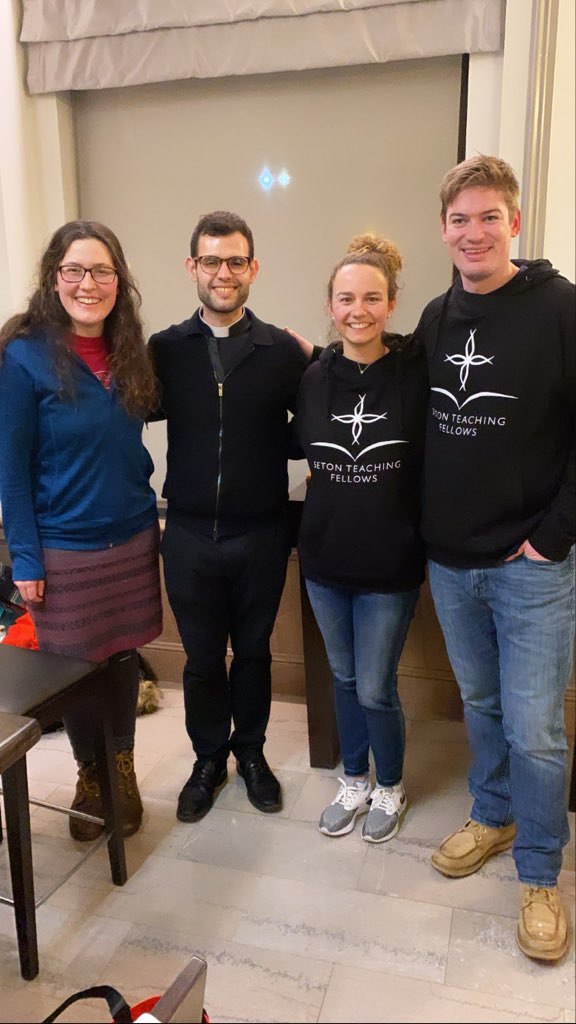
John with the STF-Alums he managed during the the 2018-2019 school year.
Moving from a manager of Seton Teaching Fellows to Assistant Principal, it’s true that being an AP is more of a job. However, education itself is still vocational. The job of a teacher isn’t 7:30-3:30. I think transferring that vision as a manager of teachers is really important. Like a Fellow, a teacher is taking things home with them, professionally and emotionally. Their life is so ingrained within the lives of students and families, so it’s important to recognize the importance of servant-leadership. Managing STFs really taught me about servant leadership. Recognizing that importance was the transformative experience that I had in New York City.
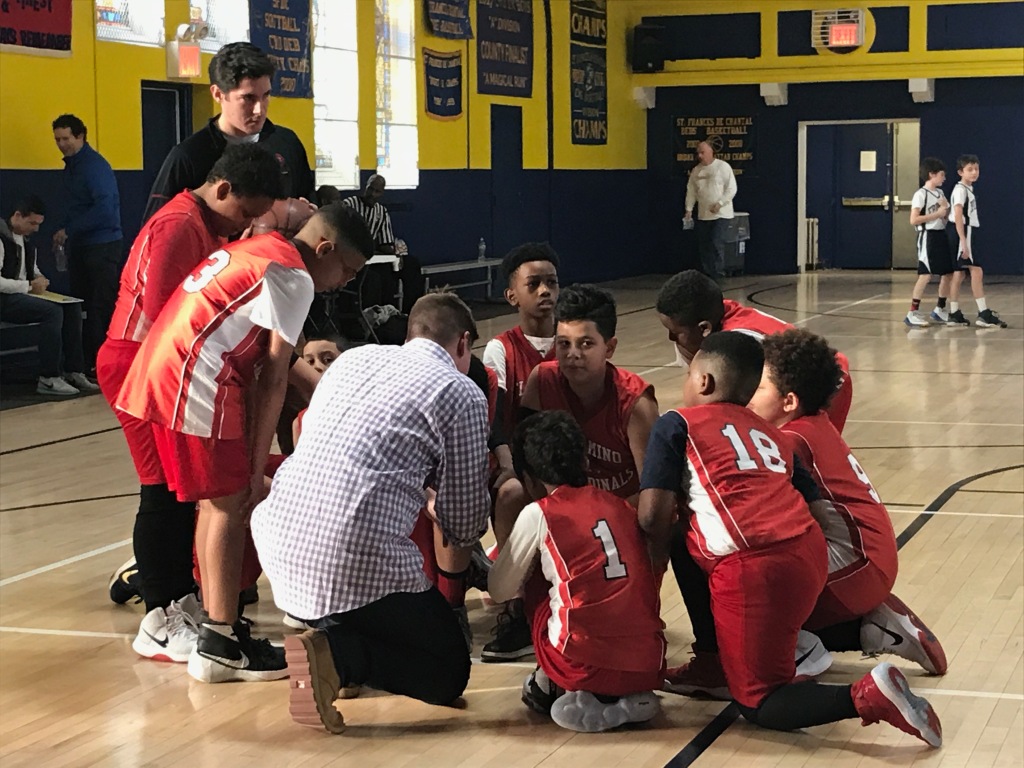
The second thing that I learned in New York through the El Camino program, is that students love to learn about the faith. They need it and they love it. This is contrary to the common belief in our culture, and contrary to the common view of what the faith is within the lives of the students. The ways I saw students in the South Bronx attach themselves to the Church showed me that the Faith is more relevant now than ever before, and that it’s going to be increasingly relevant to the lives of the students that are emerging in this generation. When you look at the teachings of Christ, and you look at authentic relationship, there’s such a lack of resources and outlets for it at this time in our culture. What the Bronx taught me is that our children want to learn about Jesus, and they want to grow. They don’t just need it, they’re interested in it, and it’s something that can be leveraged within relationships. At Romero, we plan on doubling down on that, knowing that, and trusting that students are going to be transformed by the faith.
I learned, too, that we don’t need to take the entire lift. Teachers and Program Leaders don’t need to spoon-feed the Faith. Students will play an active role in that. In missionary work in general, and especially for the STFs, it sometimes feels like missionaries need to take all the lift for students to buy in. Sometimes it’s enough just to bring Scripture.
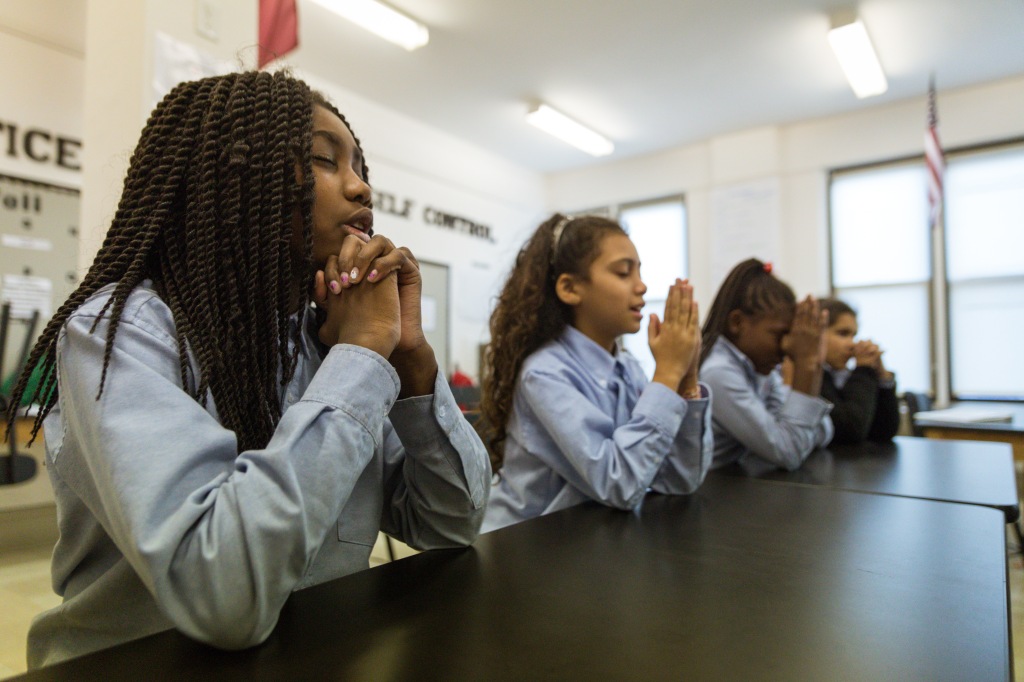
At the beginning of my teaching career I went to my mentor and I had this plan. I was going to teach the difference between faith and reason, and make an argument for how they’re two wings that lead us to truth. My mentor told me, “Just teach them scripture, just give them the Bible, it will be enough. It’s been tried and tested and it is enough.” What I learned there was essentially humility, knowing and trusting that it is enough – that Scripture and Tradition is eternally relevant. What we need to do is sometimes repackage it, and reapproach, and that is the New Evangelization. It’s not entirely up to us, we aren’t going to figure out the perfect system, we need to trust in the tools that God has given us: scripture, sacraments, prayer, and the lives of the saints.
Speaking of the New Evangelization, in what ways do you see Romero doing the work of the New Evangelization?
Cardinal Dolan said this in one of the addresses that we read with the Fellows: “The Gospel is ever ancient and ever new.” The New Evangelization is an extremely useful and important term, but in a way, it’s the same thing the Church has always done, which is spreading the Gospel message.
We are placed in a unique position in Church history in that we are tasked with evangelizing a post-Christian culture, and what we need to do is be very clever with how we approach this emerging generation. We are approaching a generation that is familiar with, that has learned what the Christian message is, but has ultimately rejected it. The culture itself has rejected it, but we are still built into systems that carry traces of Christianity, both political and social. This is an interesting place to be.
It’s not just a post-Christian culture, it’s a post-truth culture. So, if we’re living in a post-truth culture, the old tropes, methods and ways that we taught the faith aren’t going to work the same way. But I would say this, and this is where the mission of Seton comes alive: it’s not going to be arguments that win people over. We need to facilitate an authentic encounter with the person of Christ who is, as a person, “capital T Truth.” Christ is not an abstract standard, He is a Person. To break down these walls, we need to facilitate this encounter. Within Catholic education, that encounter has to be the first step. It’s not Truth and then Christ, it’s Christ and then Truth.
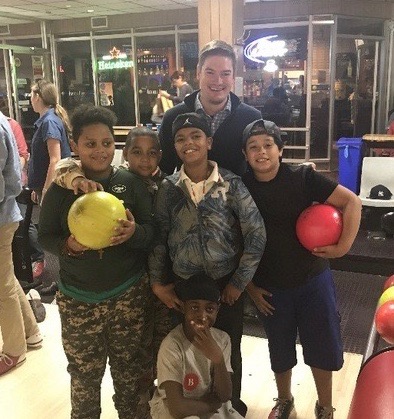
Within education, our duty is to create a love of truth, and guide students to it. In a post-truth culture, how do you do that? Start with Christ. Create an encounter with a person, and go from there. That’s how I see the Fellows. They flip evangelization on its head – “shrewd as snakes and innocent as doves” in trying to find new ways to bring Christ to students. It is truly the honor of a lifetime to work with them in this mission–these last few years at Brilla & El Camino and now at Romero.
